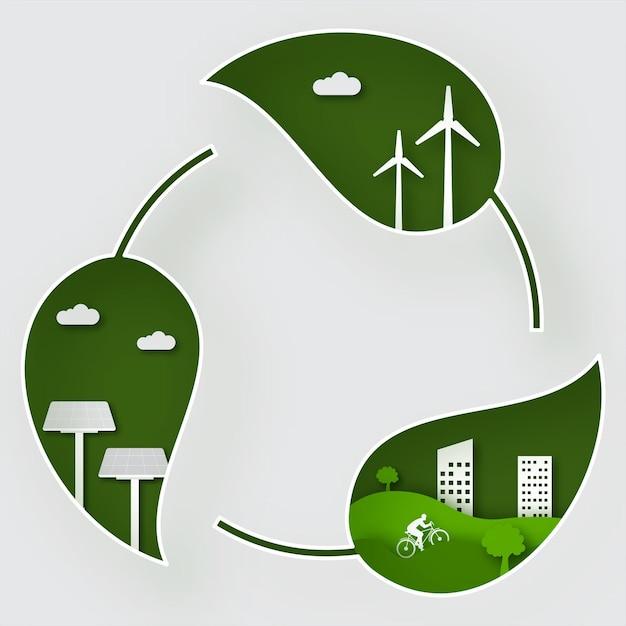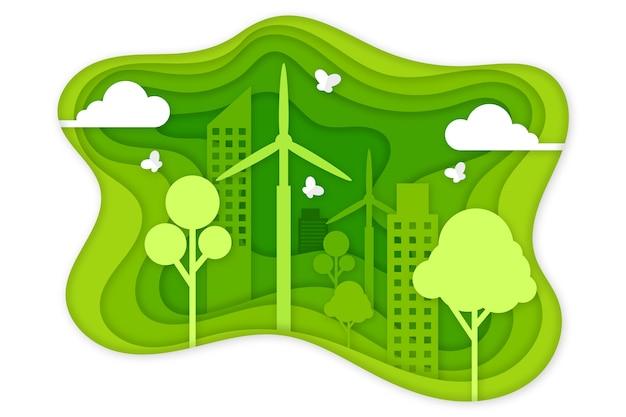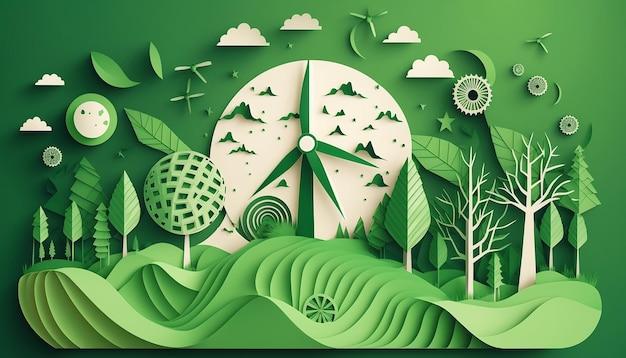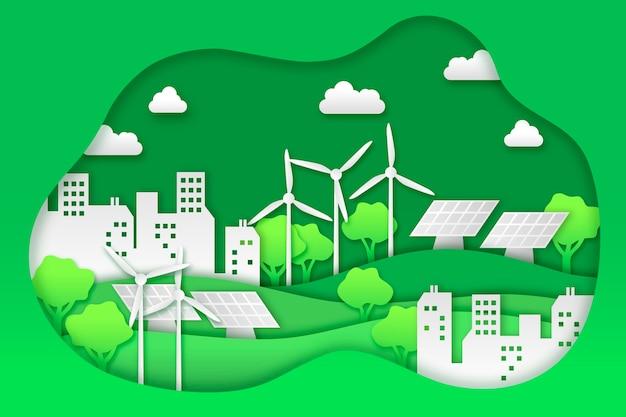When we think about being environmentally conscious, one of the first things that comes to mind is cutting back on paper usage. But, is paper actually a nonrenewable resource?
The answer to this question might surprise you. In this blog post, we will explore the sustainability of paper and address some of the most common questions surrounding this topic. From whether paper is a natural resource to whether it’s an example of a renewable resource, we’ll cover it all. So, let’s get started!
Is paper really renewable or nonrenewable
When we talk about renewable and nonrenewable resources, what comes to mind first? Most people would immediately think of natural resources such as minerals, fossil fuels, or even water. But what about paper? It’s a seemingly small thing we use every day, but have we ever stopped to think about whether paper is renewable or nonrenewable?
The answer might surprise you
At first glance, it’s easy to assume that paper is a nonrenewable resource. After all, it comes from trees, and trees take years, if not decades, to grow. But here’s the thing: paper can actually be considered a renewable resource.
How is that possible
Well, it all comes down to responsible forestry and recycling. When trees are harvested for paper production, new trees are planted in their place. As long as these trees are grown and harvested sustainably, in a responsible way that doesn’t harm the environment, then the resource is renewable.
But what about recycling
Recycling paper is also a key factor in this equation. When we recycle paper, we can reduce the need for new trees to be harvested, thus preserving forests and minimizing the environmental impact of paper production and disposal. Plus, recycling paper requires less energy and water than producing new paper from raw materials, making it an even more sustainable option.
So, what’s the verdict
Although paper comes from trees, it can still be considered a renewable resource, as long as it’s sourced, produced, and recycled responsibly. By choosing recycled paper products that are certified by organizations like the Forest Stewardship Council, we can reduce our environmental impact and help promote sustainable practices.
In conclusion, paper is a renewable resource that, with responsible forestry and recycling practices, can have minimal environmental impact. So, the next time you use a piece of paper, feel good knowing that it’s not as harmful to the environment as you might have thought.
Is Paper Non-Renewable
As surprising as it might sound, paper is not a renewable resource! Shocking, right? But wait, let me explain.
Paper is created from wood pulp, which comes from trees. Trees are natural resources, and as much as we love them, the truth is they take years to grow and mature. Yes, they can be replanted, but it still takes time for them to grow. It’s not like a renewable energy source where once it’s used up, we can immediately replenish it.
According to the Environmental Defense Fund, one ton of paper requires about 24 trees, and it takes around 68 million trees to produce the paper for the U.S alone. That’s a lot of trees! Now imagine all the other countries around the world consuming paper. It’s a lot of trees we’re cutting down, and unfortunately, we aren’t planting trees at the same rate we’re consuming them.
I’m not saying we should stop using paper altogether, but we should consider using less and recycling more. We can reduce our paper usage by simply taking notes on our phones instead of writing them down on paper. We can also opt for digital versions of books and newspapers instead of buying physical copies.
Recycling is also crucial when it comes to paper as it helps lessen the demand for new paper by reusing the old. Recycling one ton of paper can save up to 17 trees and over 3 cubic yards of landfill space. So next time you have a paper product, make sure to recycle it.
In conclusion, while paper is not a finite resource, it’s not renewable either. We need to consider alternatives to paper, reduce our consumption, and recycle more to help protect our natural resources and the environment.
Is Wood Renewable or Non-Renewable
As we mentioned before, paper is made from trees, and trees come from, you guessed it, wood. But wait, is wood a renewable or non-renewable resource? It’s a tricky question that requires a little explanation.
What is Wood
Wood is a natural material that comes from trees. It’s primarily composed of cellulose, hemicellulose, and lignin. Wood is used in a variety of applications, from building materials to furniture to paper production.
Is Wood Renewable
Wood is considered a renewable resource because trees can be grown and harvested on a sustainable basis. In fact, according to the Food and Agriculture Organization of the United Nations, global forest area has increased over the past 30 years. This means that more trees are being planted than are being cut down, making wood a sustainable resource.
How to Ensure Sustainable Wood Use
However, not all wood is harvested sustainably. Illegal logging practices can lead to deforestation and habitat destruction. That’s why we need to ensure that the wood products we purchase come from sustainable sources.
One way to do this is to look for products certified by the Forest Stewardship Council (FSC). The FSC is an international organization that certifies forest products that have been responsibly sourced and produced.
Another option is to look for products made from reclaimed or recycled wood. These products are not only environmentally friendly but can also add a unique aesthetic to your home or office.
In conclusion, wood is a renewable resource that can be harvested sustainably. By ensuring that the wood products we use come from responsible sources, we can support the growth of our forests and protect the habitats they provide. So the next time you use a wood product, take a moment to consider where it came from and how it was produced.
Is Paper a Natural Resource
When we think of natural resources, the first thing that comes to mind is probably trees. And we all know that paper comes from trees, so does that mean paper is a natural resource?
The Short Answer: Yes
Paper is most definitely a natural resource. It’s made from wood pulp, which is extracted from trees. And where do trees come from? The earth! So paper is a product of our environment, just like all the other natural resources we rely on.
But It’s More Complicated Than That
Of course, the story doesn’t end there. Just because something comes from nature doesn’t mean it’s sustainable or renewable. In fact, the way we produce paper can have serious negative impacts on the environment.
For example, the logging industry is notorious for its destruction of forests and wildlife habitats. Clear-cutting areas to make way for tree farms can lead to soil erosion, water pollution, and loss of biodiversity. And that’s not even considering the greenhouse gas emissions associated with transportation and processing.
So What’s the Answer
It’s up to us to find a balance between using natural resources and preserving the environment. That’s where sustainable forestry comes in. By using responsible logging practices, we can ensure that our paper products come from renewable sources that are replanted and managed responsibly.
Of course, we can also reduce our paper consumption and opt for digital alternatives whenever possible. But even then, there will always be a need for paper products in certain industries. So the key is to make sure we’re using them in the most responsible way possible.
So, is paper a natural resource? Yes. But that’s just the beginning of the story. We need to be conscious of the environmental impact of our paper consumption and work towards more sustainable practices. Whether it’s using recycled products, choosing sustainable sources, or simply using less, we can all do our part to protect our natural resources for generations to come.
Is Paper an Example of a Renewable Resource
As kids, we learned that paper comes from trees. But does that mean paper is a renewable resource? Technically, yes. But it’s not that simple.
Renewable Resource or Not
Paper is made from wood pulp, which is grown on trees. Trees are, therefore, the source of paper. And since trees can be replanted and grown, paper is considered a renewable resource.
However, not all paper comes from sustainably managed forests. If we continue to overuse and destroy our forests without replanting, we risk depleting our natural resources.
Saving Trees with Recycling
Recycling paper is a great way to save trees and prevent waste. Did you know that recycling one ton of paper can save 17 trees and 7,000 gallons of water? That’s a lot of resources!
By recycling our paper products, we can reduce our reliance on wood pulp and protect our forests. Plus, it’s a great way to reduce waste and save energy.
Using Alternatives
We don’t always need to use paper. There are many alternatives available, like cloth napkins, handkerchiefs, and reusable bags. When we do need paper products, we can opt for recycled or sustainably sourced options.
By reducing our paper consumption, we can help preserve our natural resources and protect the planet.
So, is paper a renewable resource? Yes, technically. But we need to be mindful of how we use and source it. By recycling, reducing our consumption, and using sustainable options, we can help protect our forests and keep paper as a renewable resource for generations to come.
Are Paper and Cotton Renewable or Nonrenewable
If you’re an eco-conscious person, you might have wondered whether paper and cotton are renewable resources or not. Fortunately, we have an answer for you.
Paper: A Renewable Resource That Needs More Attention
Yes, paper is renewable, but there’s a catch. Trees, the primary source of paper, take years to grow and mature. Also, the production and use of paper come with environmental costs, such as deforestation, water consumption, and CO2 emissions. However, many paper products today come from certified sustainable forests or recycled materials, which reduces the negative impact on the environment.
So, if you’re a lover of all things paper-related, don’t worry. As long as you recycle or support products from sustainable sources, you can keep your obsession with paper guilt-free.
Cotton: A Renewable Resource with a Dirty Secret
Cotton is one of the most widely used fibers in the world, but is it renewable? The answer is yes; cotton is renewable, but there’s a catch, again.
Cotton farming requires a vast amount of water and often involves using pesticides and other chemicals that cause environmental damage. Also, cotton is a valuable cash crop, which means that farmers often expand their farming area, leading to deforestation.
On the bright side, there are many sustainable cotton farming practices that can help reduce the environmental damage caused by cotton production. For example, organic cotton farming uses fewer pesticides and requires less water than conventional farming methods.
In conclusion, both paper and cotton are renewable resources, but their sustainability depends on how they’re sourced and produced. It’s up to us to support sustainable practices and ensure that these resources will be available for future generations. So, go ahead, write on paper, wear cotton clothes, but always choose products from sustainable sources. It’s never too late to start living an eco-friendly lifestyle.



